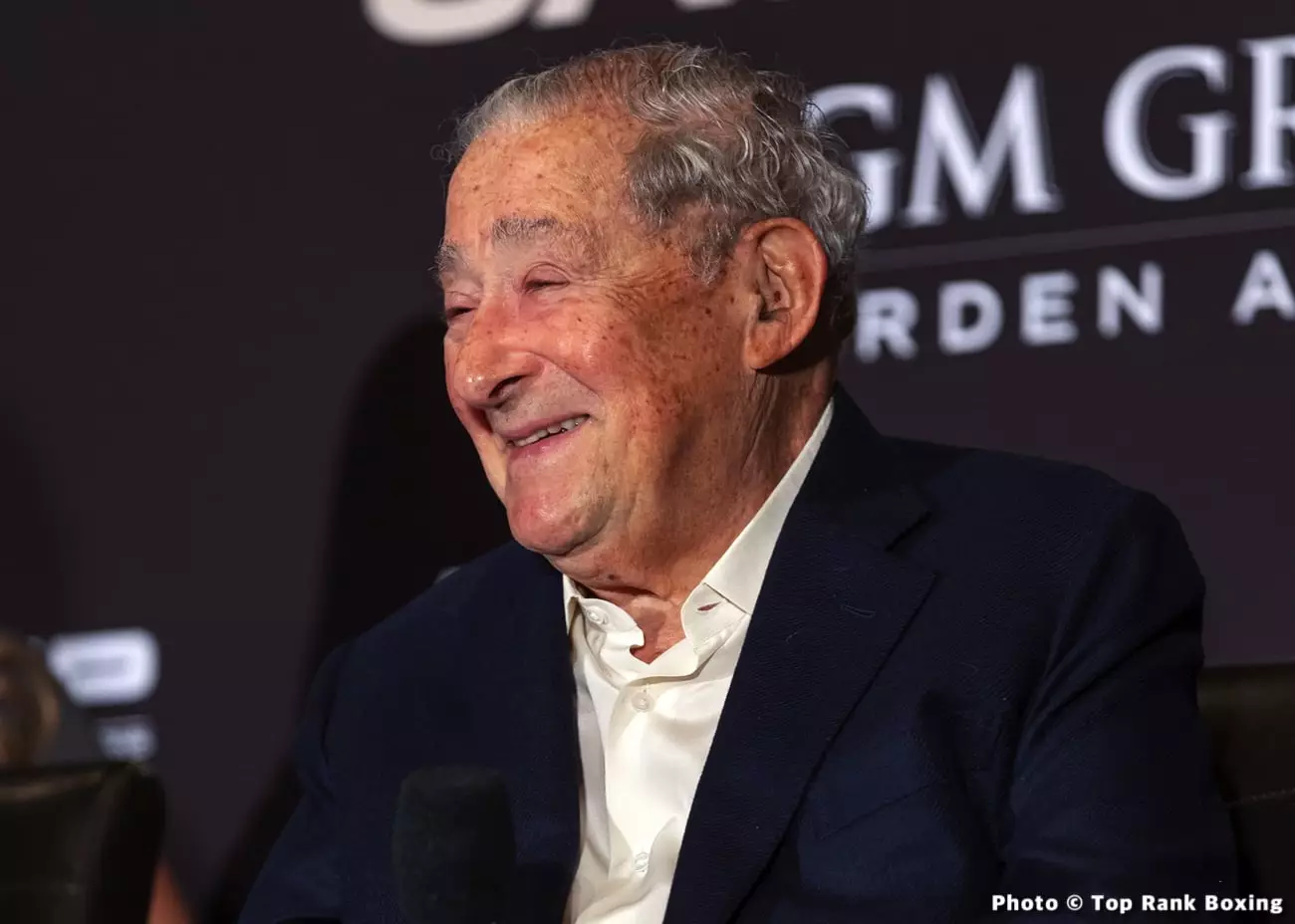In recent years, there’s been a noticeable shift in how boxing aficionados view Canelo Alvarez, a fighter who once commanded the spotlight with his captivating skills and dramatic bouts. Hall of Fame promoter Bob Arum’s recent comments encapsulate the growing discontent regarding Canelo’s approach to the sport. His criticisms echo those of Oscar De La Hoya, who expressed his disappointment with Alvarez’s recent performances, especially after the lackluster fight against William Scull. This fight has served as a watershed moment, transforming Canelo’s image from a thrilling competitor to a fighter perceived as solely interested in financial gain.
The disaffected remarks emerging from key figures in the boxing world raise a pertinent question: What happened to the fighter who electrified fans with a fiery spirit and compelling matches? Critics, including Arum and De La Hoya, posit that Canelo has morphed into a business entity rather than an athlete with an unquenchable thirst for competition. They lament that his recent fights lack the excitement that his fans once cherished.
The Business of Boxing: A Double-Edged Sword
Canelo’s transformation into a businessman is both understandable and fraught with complications. In an industry where fighters often blaze bright and fade fast, it’s prudent for athletes to cash in on their marketability while they can. However, this shift begs a deeper discussion about the essence of boxing. Is a fighter still worthy of praise when their bouts are driven more by financial incentives than by a genuine desire to entertain and challenge themselves?
Arum’s assessment emphasizes the stark contrast between Canelo and Terence Crawford, highlighting the latter as a fighter who consistently seeks to push his limits. While Crawford is respected for his relentless pursuit of excellence, Canelo is seen as someone who might merely be going through the motions. Declining to invest emotionally in his fights can alienate fans who remember a time when Canelo fought with gusto, leaving nothing on the table.
The Upcoming Bout: High Stakes and High Tensions
Canelo’s upcoming fight against Crawford stands as a critical juncture for both fighters. The stakes are high—Canelo must silence his critics and reclaim the fierce competitiveness that originally propelled him to stardom. There is a palpable tension surrounding this bout; boxing enthusiasts are left wondering which version of Canelo will step inside the ring. Will it be the fighter motivated by the allure of a fat paycheck or the warrior who once sought glory?
Given Canelo’s recent performances, skepticism looms over his ability to deliver an engaging contest. Arum’s comments imply a fear of a potential snoozefest reminiscent of the uninspired clash with Scull. For Canelo, Aug. 2023 presents a watershed moment: a chance to re-establish himself as a must-watch fighter or risk solidifying his reputation as a mere commodity in a sport that demands raw passion and intense competition.
The Bigger Picture: The Future of Boxing
The implications of Canelo’s performance extend beyond his personal legacy. The state of boxing itself hinges on its stars and their willingness to engage in fights that set the sport alight. When Canelo prioritizes monetary gain over the art of fighting, it diminishes not just his own brand but also casts a shadow over the entire industry. If high-profile matches devolve into lackluster affairs, fans may find themselves drawn away from the sport altogether.
Arum’s comments reflect a broader concern: that fighters risk losing the delicate balance between entertainment and business. Canelo Alvarez becomes a litmus test for the sport. Will he answer the call of his critics and rekindle his fighting spirit, or will he continue to prioritize the financial payday over the thrilling exchanges that endeared him to fans worldwide? The world of boxing watches with bated breath. The future of the sport could hinge on how this narrative unfolds.

